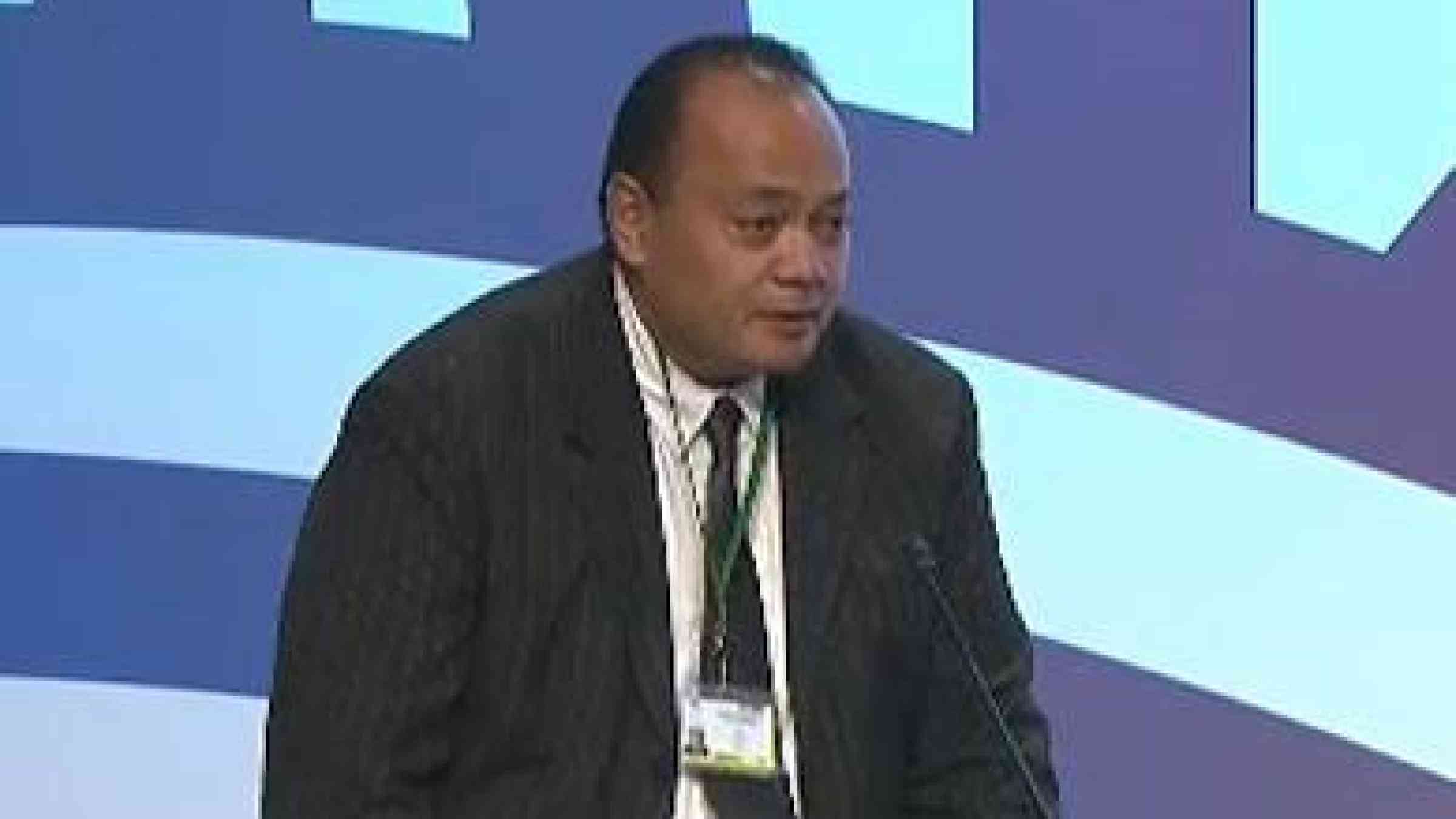Please help us improve PreventionWeb by taking this brief survey. Your input will allow us to better serve the needs of the DRR community.
Building a more resilient Tonga against disaster risk

Photo by MIC/Government of Tonga Deputy Prime Minister, Hon. Siaosi Sovaleni addressing the 3WCDRR in Sendai, Japan
As second most-at risk country in the world to natural disasters and hazards, Tonga needs to be more resilient to protect the livelihood of its people and infrastructure in order to sustain development and achieving national objectives, according to the Deputy Prime Minister and Minister for Meteorology, Energy, Information, Disaster Management, Environment, Climate Change and Communications (MEIDECC), Hon. Siaosi Sovaleni, who led a Tongan delegation to the Third United Nations World Conference on Disaster Risk Reduction (3WCDRR), which was held from 14-18 March 2015, in Sendai, Japan.
Tonga faces disaster risk and constant threat from earthquakes, tsunamis, volcanic eruptions, tropical cyclones, and climate change related events such as droughts, sea level rise, flooding and erosion of low-lying areas and coral bleaching.
Most recently, Tonga’s Northern Islands Group of Ha’apai, was hit by Category 5 Tropical Cyclone Ian resulting in loss of one life and displacing almost 70 per cent residents at a cost close to US$48 million dollars, at the beginning of last year, 2014. Later in the year, severe drought in most part of Tonga affected some key agricultural export products. The year closed off with volcanic eruptions between the Hunga Islands, only 62 kms away from the capital, Nuku’alofa, which had caused disruptions to international and domestic air transportation.
“These natural occurrences have increasingly eroded our development gains, and affect the overall level of sustainability of our Disaster Risk Reduction” said the Deputy Prime Minister in addressing the conference.
“My Ministry ensures that the limited resources and technical expertise available are effectively and efficiently shared and utilized, as part of our effort to building a more resilient Tonga against these risks” according to the Deputy Prime Minister.
He further added that Tonga is the first country in the Pacific to develop and approve a Joint National Action Plan (JNAP) for the integration of Climate Change and Disaster Risk Management.
This integrated approach has resulted in several inter-sectoral programs being established to address Tonga’s priorities for disaster risk reduction, climate change adaptation, and strengthened preparedness, response and recovery effort.
Tonga took a step further last year under a Government restructure by merging Climate Change and Disaster Risk Management into one Ministry, and this is ‘testimony” as explained by the Deputy Prime Minister, to Tonga’s commitment to building a more resilient approach in order to save lives and sustain development.
“Tonga continues to work together with its regional organizations and development partners in addressing its high degree of vulnerability to climate change and disaster risks” as confirmed by the Deputy Prime Minister.
To be more resilient to expected level, “We seek greater investment in science and technology to better inform risk reduction activities and improved early warning systems” as the Deputy Prime Minister calls for more assistance and collaborative efforts from and among development partners in order to achieve the target of the Post-2015 Framework for Disaster Risk Reduction and the Sustainable Development Goals currently being developed, including the Small Islands Development States Accelerated Modalities for Action (Samoa Pathway).
The Post-2015 Framework was finally approved during the last session of the Conference after marathon negotiations. This is a framework to limit the damage to people and property from earthquakes, volcanic eruptions and extreme weather.
The other delegates representing Tonga include the Ambassador of Tonga to Japan, HE Tania Tupou; CEO (Interim) of the Ministry, Mr. Paula Pouvalu Ma’u; and the Director for Disaster Management Department, Mr. Leveni ‘Aho.
Explore further
Please note: Content is displayed as last posted by a PreventionWeb community member or editor. The views expressed therein are not necessarily those of UNDRR, PreventionWeb, or its sponsors. See our terms of use
Is this page useful?
Yes No Report an issue on this pageThank you. If you have 2 minutes, we would benefit from additional feedback (link opens in a new window).